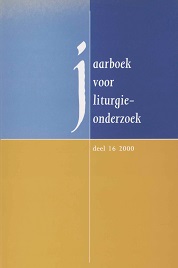Het middeleeuwse doksaal in Nederland
Abstract
The Rood loft in the Netherlands. In most large churches, in the Middle Ages the choir was separated from the nave by a raised gallery that could be used for lectures and church music. The name of such a structure in Dutch is ‘doksaal’, in German ‘Lettner’, in French ‘jubé’, and in English ‘rood loft’. Most of these were removed after the Middle Ages, partly during the Reformation, and partly in the 17th and 18th centuries, because Roman Catholic churches, too, wanted to involve the laymen more with the service going on in the choir. In The Netherlands stone or brick rood lofts were preserved in two city churches: Amersfoort and Rhenen, and a wooden one in the city church of Schoonhoven. Concerning the village churches outside the province of Groningen, only the churches of Helvoirt (rood loft now in a museum) and Oosterend preserved a rood loft, in both cases a wooden one. In the province of Groningen a brick rood loft was preserved in Leermens (partly) and in Krewerd, and a wooden one in Holwierde. Many other Groningen churches are known to have possessed rood lofts. In this connection Groningen is related to the Northern German coastal area, where several rood lofts have been preserved. Monastic churches often contained a rood loft as a separation between the space for the monks and that for the laymen. Only in Ter Apel has that situation been preserved.


